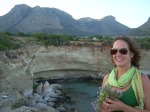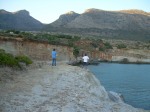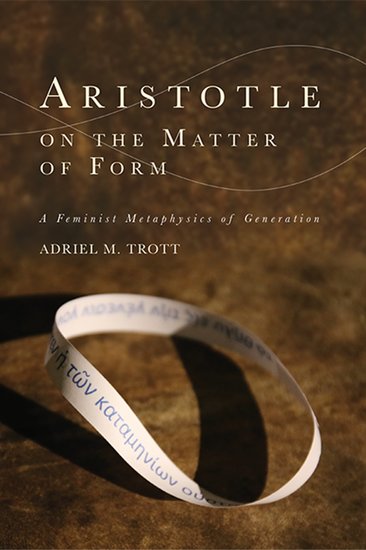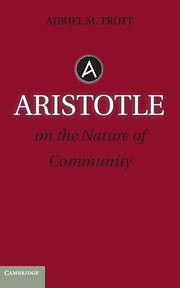Neapoli, Pt. 1: The Case for Local Guides over Tourbooks

We’ve been pretty happy with our guide books to Greece — Rick Steve’s Athens and the Peloponnese and the Blue Guide for Greece — but there’s just no comparison to a real live local who knows and loves a place and its people. This weekend, we drove to Neapoli. (PSA: Don’t think that the ‘shorter’ way on the map is actually shorter because it will take you over the mountains and slowly. Basically, ignore Google Maps. Take the A7 north of Argos toward Tripoli. It’ll cut about an hour out of the trip. In Greece, roads don’t really have names. It’s just the road to Tripoli or the road to Sparta. That’s all well and good until you realize that there might be more than one road to Tripoli and one will take you two hours over steep mountains and hairpin curves, and the other is a highway that will take you about forty minutes. One reason it may have taken us so long is we had to stop for the sheep dogs to run these sheep across the street to their watering hole. Our general impression was how obedient the sheep were.)
The Blue Guide does not have a dedicated chapter on Neapoli and only mentions it as a place that is near Monemvasia — which we did visit and I will discuss in my next post. Here’s what they say, “The port of Neapolis in the south, lined with largely unappealing holiday flats and small hotels, fronts the Voiatic Gulf…” I think that they aren’t so into it because it doesn’t really have ancient or Byzantine ruins. Another theory is that they must have gone to Neapoli, loved it as we did, but remain committed to the code of not telling the touristing public about the really best places — that’s the surest way to ruin a place. I’m breaking that code here because it was really so amazing, I can’t hold back.
Jeff has a good friend, Kosmas,* who was studying with him at Freiburg and is now teaching German in Neapoli. We stayed in his apartment just half a block off the water (just like the roads aren’t named, neither are the buildings nu mbered, this caused some confusion, but we eventually figured it out). We could see the water from his back terrace. The first night, we went to the cafe that he and his colleagues spend most of their time at just down the main strip. I had another one of those moments where you think that your ancient Greek vocabulary can do the job when it won’t when I ordered “ena oine,” you know as in oinology, expecting wine and got nothing, not just something else, but nothing. He did bring the campari and soda I asked for so I think I really must have just sounded like I was saying ena again about the campari. After some drinks, we went to this little resta
mbered, this caused some confusion, but we eventually figured it out). We could see the water from his back terrace. The first night, we went to the cafe that he and his colleagues spend most of their time at just down the main strip. I had another one of those moments where you think that your ancient Greek vocabulary can do the job when it won’t when I ordered “ena oine,” you know as in oinology, expecting wine and got nothing, not just something else, but nothing. He did bring the campari and soda I asked for so I think I really must have just sounded like I was saying ena again about the campari. After some drinks, we went to this little resta
urant on the sea, called Mone Mone, whose cuisine our Greek friend described as “new Greek cuisine,” authentic Greek food with a modern twist. We had Greek salad with cucumbers and pomegranate seeds, cheese pie with mint, fried feta, a dish that was like a pork curry with red peppers and onions, and fried zucchini blossoms stuffed with a cheese cream sauce. We drank local white wine and raki with fresh fruit for dessert.
The next day we met up at the same cafe we first had drinks at, Cafe Maggiolino. Then we took a ferry across to Simos, an island just a little ways away from the coast. We passed this small little island around and under 
 which they have found ruins. You can actually scuba dive down and see the ruins on the floor of the sea. At Simos, we went to the beach, on the far side (south) of the island, which was amazing. I need to find another word, but that’s really what I kept saying. The sky was blue. The water was blue. The beach was sandy and soft and clean. And there weren’t that many people there. We went pretty far out into the water, as it seems people really like to do in Greece. Jeff and I had the humbling experience of playing paddle ball in front of a lot of other people playing paddle ball who could actually play paddle ball. Kosmas and Jeff and I hit the volleyball around a bit — nice to get some exercise and not just laze on the beach. All the local talk was about how the beach might be privatized. Apparently, Brad Pitt was in town asking about buying up property. The locals are not happy.
which they have found ruins. You can actually scuba dive down and see the ruins on the floor of the sea. At Simos, we went to the beach, on the far side (south) of the island, which was amazing. I need to find another word, but that’s really what I kept saying. The sky was blue. The water was blue. The beach was sandy and soft and clean. And there weren’t that many people there. We went pretty far out into the water, as it seems people really like to do in Greece. Jeff and I had the humbling experience of playing paddle ball in front of a lot of other people playing paddle ball who could actually play paddle ball. Kosmas and Jeff and I hit the volleyball around a bit — nice to get some exercise and not just laze on the beach. All the local talk was about how the beach might be privatized. Apparently, Brad Pitt was in town asking about buying up property. The locals are not happy.

 Mid-afternoon we drove back to the other side of the island and walked out to the little island church and by this duck house that fishermen put food into for the ducks. By this time we had a pretty serious appetite so we went to Antone’s overlooking the fishing boats on the water. We ate Greek salad, grilled octopus, fresh fried sardines and some other small fresh fried fish that had little bones in it that you had to pick out. This work was certainly worth it because the fish were amazing. As Kosmos said, you did not die in vain, little fish, you died for us to eat.
Mid-afternoon we drove back to the other side of the island and walked out to the little island church and by this duck house that fishermen put food into for the ducks. By this time we had a pretty serious appetite so we went to Antone’s overlooking the fishing boats on the water. We ate Greek salad, grilled octopus, fresh fried sardines and some other small fresh fried fish that had little bones in it that you had to pick out. This work was certainly worth it because the fish were amazing. As Kosmos said, you did not die in vain, little fish, you died for us to eat.


Late afternoon we took the ferry back to the mainland, went and cleaned up, and drove out to the petrified forest on the end of the peninsula. It seems that about two million years ago, the palm trees in this area were remarkably preserved by a petrifying process. As Jeff said, we’ve gone from columns of the classical period of Greece to the columns of really ancient Greece. Amongst the petrified trees were these deep holes in the ground that connected to the sea. Because of the suction between the upper air and the sea, they made these horrific monster noises that sounded like someone was down there. It wasn’t hard to see how people came up with ideas about sea monsters. I picked some wild oregano that I want to take back home with us.

 In our first twenty-four hours in Neapoli, the case for the local over the guidebook was pretty well-sealed. We saw and experienced and ate things we just never would have known to look for. In the next twenty-four hours of our trip, we kept seeing and eating things we never would have known to look for, but we also met other locals who gave us a better sense of Greek life. And, we learned things. If a local guide is better than guidebook, a local guide who also has a Ph.D. in philosophy is even better. I’ll blog by the end of the week about our conversations about what I learned about modern Greek thinking and ancient Greek reception.
In our first twenty-four hours in Neapoli, the case for the local over the guidebook was pretty well-sealed. We saw and experienced and ate things we just never would have known to look for. In the next twenty-four hours of our trip, we kept seeing and eating things we never would have known to look for, but we also met other locals who gave us a better sense of Greek life. And, we learned things. If a local guide is better than guidebook, a local guide who also has a Ph.D. in philosophy is even better. I’ll blog by the end of the week about our conversations about what I learned about modern Greek thinking and ancient Greek reception.
Coming next: Neapoli, Pt. II: St. Nicolas and Monemvasa
*An earlier version of this post spelled Kosmas’ name incorrectly.







Looks absolutely beautiful. Was the wild oregano bergamot? That’s what we call wild oregano in Montana